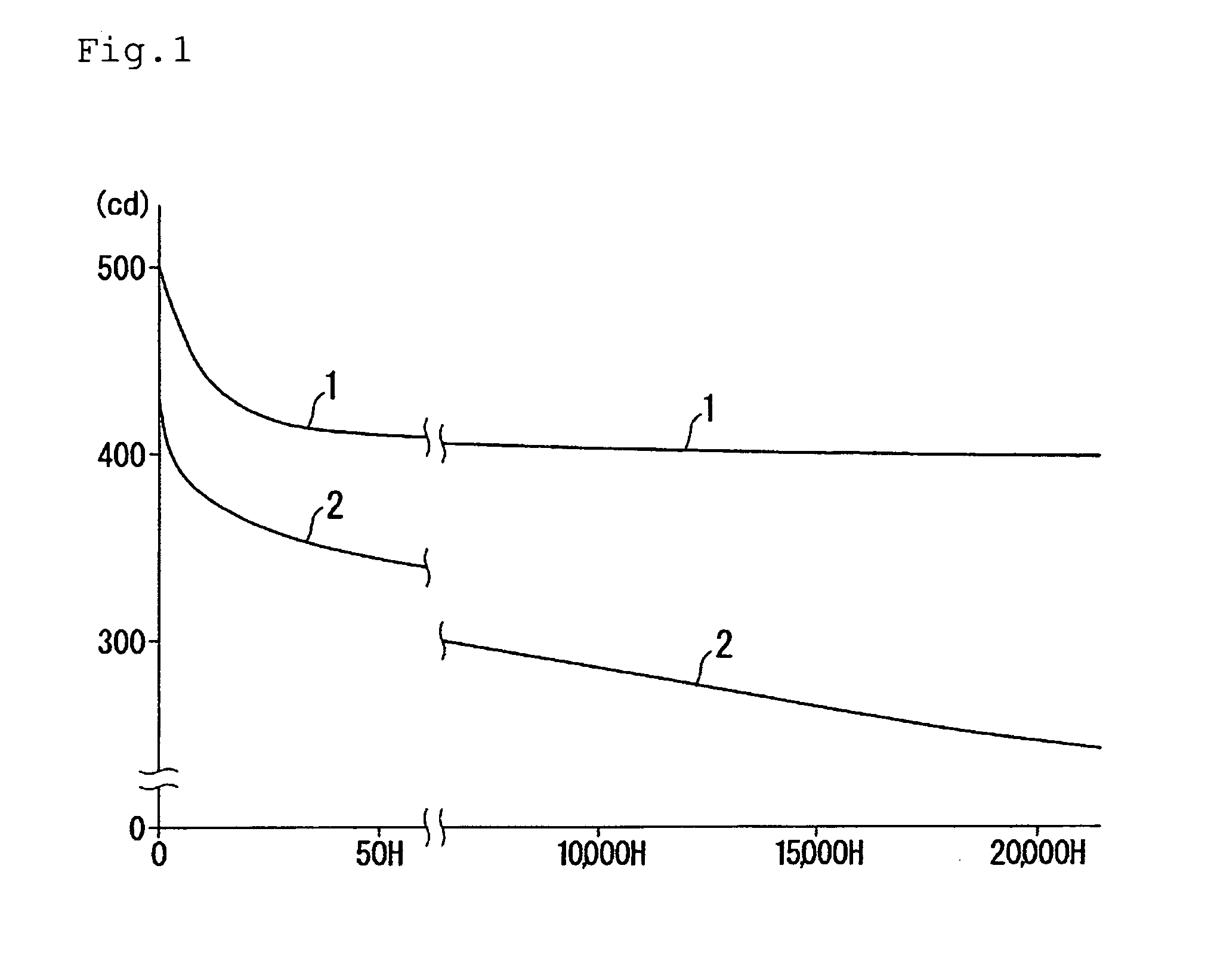Manufacturing method of light-emitting material
a manufacturing method and technology of light-emitting materials, applied in the direction of manufacturing tools, superimposed coating process, liquid/solution decomposition chemical coating, etc., can solve the problems of insufficient volume contraction at such process, insufficient to provide a long-life el display device, and inability to peel, so as to prevent the deterioration of the light-emitting material, not peelable, and not sacrificing luminance.
- Summary
- Abstract
- Description
- Claims
- Application Information
AI Technical Summary
Benefits of technology
Problems solved by technology
Method used
Image
Examples
example 1
[0042] Formation of glass film having moisture and gas barrier property on fine particles of light-emitting material
[0043] A main reactant (containing a catalyst) was prepared in the following manner.
[0044] 1. 20 g of an organic silicon compound (trade name: “Powder Processing Silicone”, manufactured by Toshiba Silicones Co., with a chemical structure 4 and with physical properties shown in Table 1) were dissolved in 200 ml of ethyl alcohol;
[0045] 2. 0.4 g of boric acid (H3BO3) were added to and mixed with thus obtained solution; 3. 0.4 g of ammonium hydrogen fluoride (NH4F·HF) were added and mixed thereto;
[0046] 4. 1 g of tetrabutyl titanate [(C4H9)4TiO4] was further added and mixed.
TABLE 1Appearancecolorless transparent liquidDynamic viscosity (25° C.)3.7 cstSpecific gravity (25° C.)1.06Refractive index (nD)1.3829Flash point52° C.
[0047] A process utilizing a dispersion medium was conducted in the following procedure.
[0048] At first 200 g of fine particles of a light-emittin...
example 2
[0055] Fine particles of a phosphor-based phosphorescent material (green, 60 μm, manufactured by Ecran Ltd.) were processed in the identical manner as in Example 1 to obtain particles coated with a glass film of the invention on the surface, and such particles and particles of the same material which were not thus processed were compared with regard to change with time of the luminance of afterglow when irradiated with 4 black lamps of 20 W for 30 minutes. Results are shown in FIG. 3. The measurement was conducted with an equipment LS-100 manufactured by Minolta Co., at a measuring distance of 100 cm and at a vertical measuring angle. In FIG. 3, the light-accumulating material subjected to the glass film forming process (♦) had an afterglow luminance of 5 mcd (millicandela) / m2 even after 16 hours, while the unprocessed same material (▴) showed a rapid decrease in the afterglow luminance after 8 hours.
[0056] As explained above, the manufacturing method of the invention for the light...
PUM
| Property | Measurement | Unit |
|---|---|---|
| temperature | aaaaa | aaaaa |
| temperature | aaaaa | aaaaa |
| temperature | aaaaa | aaaaa |
Abstract
Description
Claims
Application Information
 Login to View More
Login to View More - R&D
- Intellectual Property
- Life Sciences
- Materials
- Tech Scout
- Unparalleled Data Quality
- Higher Quality Content
- 60% Fewer Hallucinations
Browse by: Latest US Patents, China's latest patents, Technical Efficacy Thesaurus, Application Domain, Technology Topic, Popular Technical Reports.
© 2025 PatSnap. All rights reserved.Legal|Privacy policy|Modern Slavery Act Transparency Statement|Sitemap|About US| Contact US: help@patsnap.com



